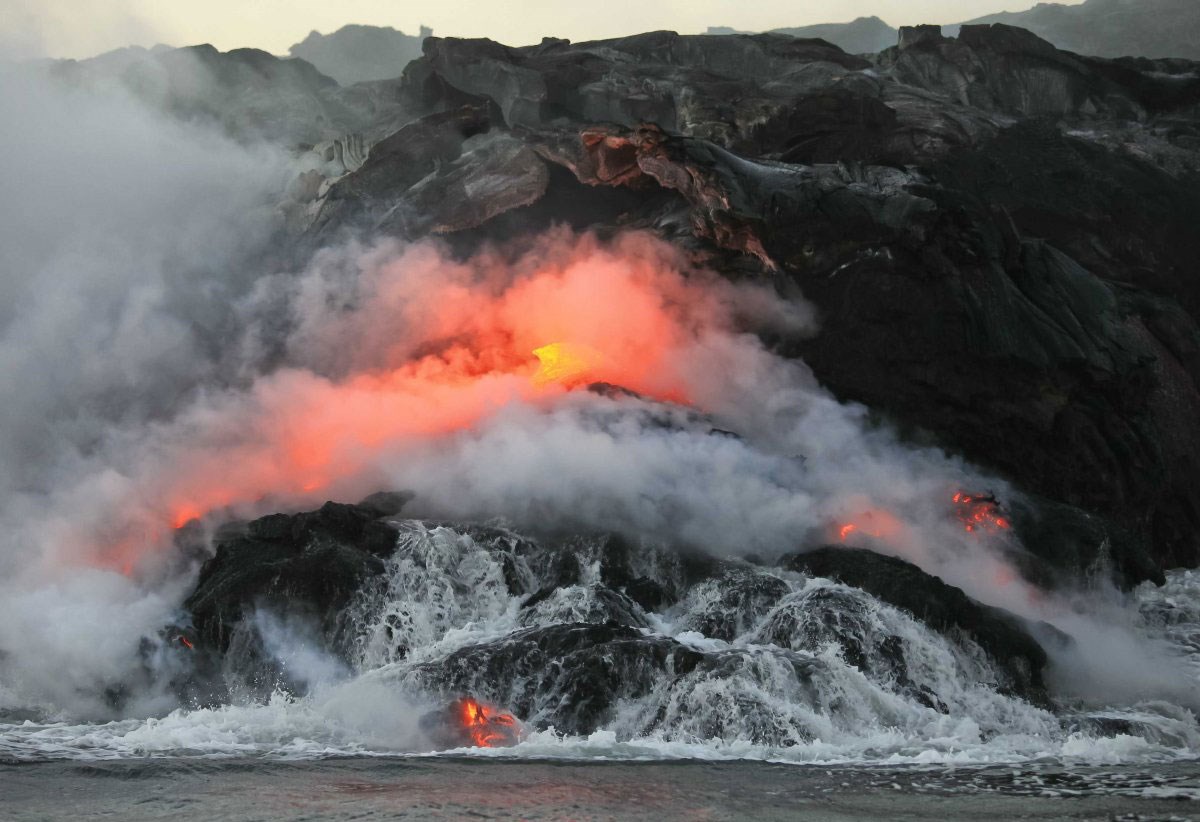
The Hawaiian Archipelago stretches 1,500 miles across the central Pacific. Tiny dots upon a map of the Pacific, the Hawaiian Islands are in reality the tops of a range of mighty mountains, perhaps the greatest mountain range on earth, built up from the sea floor by thousands upon thousands of volcanic eruptions. Mauna Kea, on the island of Hawaii, rises some 30,000 feet above its base. It is certainly the highest island peak in the world and quite probably the world's highest mountain in terms of elevation above the ocean floor.
The Hawaiian mountains were born when a fissure opened in a northwest-southeast direction across the floor of the Pacific Ocean. As tectonic plates moved ever eastward across this fissure, molten rock created islands. But as the top of the mountains reached into shallower water near the surface of the sea, first currents and then waves began to attack the growing mass, knocking fragments of lava rock loose and washing them away into deeper water. When eventually the volcanoes thrust their heads above the sea, their struggle for existence became still more intense. Then began the great battle between the constructive forces of volcanism, ever striving to build the island upward and outward with flow upon flow of new lava, and the destructive forces of wave, stream, wind, and even ice erosion, carving away the land and carting away the debris to dump it into the ever-hungry abyss of the ocean. So long as volcanism continued fully active, the islands continued to grow. When volcanic activity weakened and finally died out, the powers of erosion seized control.
The story of Hawai'i is a geologic story and it is still being told today. Learn more below. For any active volcano information, visit Hawaii Volcanoes National Park's website.
Last updated: August 22, 2019
